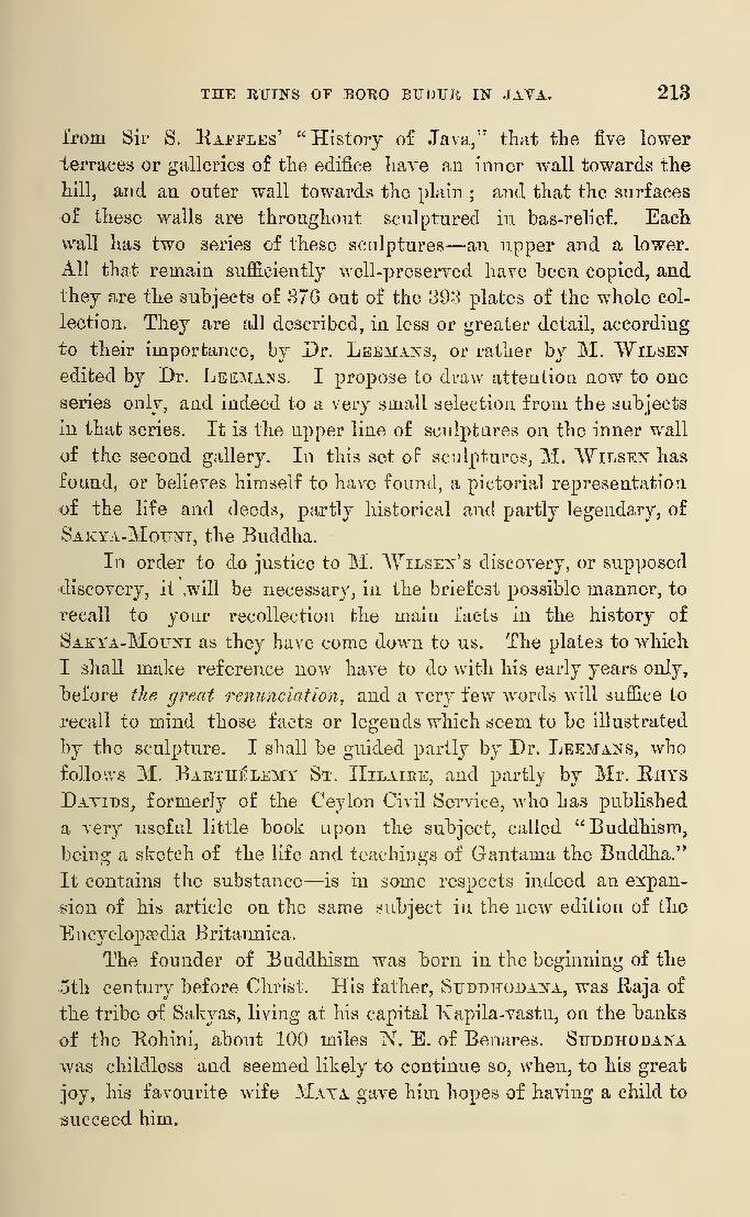from Sir S. RAFFLES' "History of Java," that the five lower terraces or galleries of the edifice have an inner wall towards the hill, and an outer wall towards the plain; and that the surfaces of these walls are throughout sculptured in bas-relief. Each wall has two series of these sculptures—an upper and a lower. All that remain sufficiently well-preserved have been copied, and they are the subjects of 376 out of the 393 plates of the whole collection. They are all described, in less or greater detail, according to their importance, by Dr. LEEMANS, or rather by M. WILSEN edited by Dr. LEEMANS. I propose to draw attention now to onc series only, and indeed to a very small selection from the subjects in that scries. It is the upper line of sculptures on the inner wall of the second gallery. In this set of sculptures, M. WILSEN has found, or believes himself to have found, a pictorial representation of the life and deeds, partly historical and partly legendary, of SAKYA-MOUNI, the Buddha.
In order to do justice to M. WILSEN's discovery, or supposed discovery, it will be necessary, in the briefest possible manner, to recall to your recollection the main facts in the history of SAKYA-MOUNI as they have come down to us. The plates to which I shall make reference now have to do with his early years only, before the great renunciation, and a very few words will suffice to recall to mind those facts or legends which seem to be illustrated by the sculpture. I shall be guided partly by Dr. LEEMANs, who follows M. BARTHÉLEMY ST. HIILAIRE, and partly by Mr. Rays DAVIDS, formerly of the Ceylon Civil Service, who has published a very useful little book upon the subject, called "Buddhism, being a sketch of the life and teachings of Gantama the Buddha." It contains the substance—is in some respects indeed an expan- sion of his article on the same subject in the new edition of the Encyclopædia Britannica.
The founder of Buddhism was born in the beginning of the 5th century before Christ. His father, SUDDHODANA, was Raja of the tribe of Sakyas, living at his capital Kapila-vastu, on the banks of the Rohini, about 100 miles N. E. of Benares. SUDDHODANA was childless and seemed likely to continue so, when, to his great joy, his favourite wife MAYA gave him hopes of having a child to succeed him.
